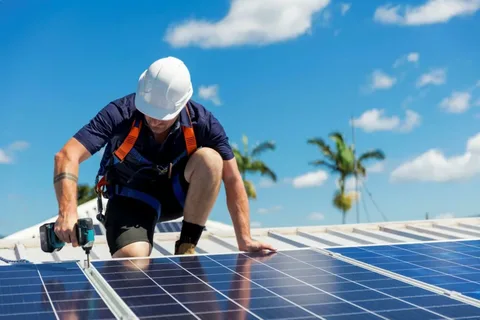As more homeowners seek to reduce their carbon footprint and lower their electricity bills, installing a home solar power system has become an attractive option. However, the upfront cost of solar panels and installation can be significant. Understanding the financing options for installing a home solar power system is crucial for making this sustainable energy choice affordable and accessible.
Why Consider Financing for Solar Power Systems?
Solar power systems can save money in the long run, but the initial investment can be a barrier. Financing allows homeowners to spread out the cost over time, making solar energy more accessible. By exploring different financing options for installing a home solar power system, homeowners can find solutions that fit their budget and financial goals.
Common Financing Options for Installing a Home Solar Power System
1. Solar Loans
Solar loans are similar to traditional loans but are specifically designed for solar installations. Homeowners can borrow the full amount needed for the solar system and repay it over several years with interest. Solar loans often have lower interest rates compared to other types of personal loans, and some lenders offer flexible terms.
2. Solar Leases and Power Purchase Agreements (PPAs)
In a solar lease or PPA, a third-party company installs and owns the solar panels on your roof. You pay a fixed monthly fee (lease) or pay for the electricity generated (PPA). This option requires little to no upfront cost, making it attractive for homeowners who want to avoid large initial expenses. However, you typically don’t own the system and therefore miss out on some financial incentives.
3. Home Equity Loans or Lines of Credit
Homeowners can also use home equity loans or lines of credit to finance their solar power systems. This option leverages the equity built in your home as collateral, often offering lower interest rates. It’s essential to consider the risk, as your home is tied to the loan.
4. Government Incentives and Rebates
While not a direct financing method, government incentives and rebates can significantly reduce the cost of installing a home solar power system. Many states and local governments offer tax credits, rebates, and grants to encourage solar adoption. Combining these incentives with financing options can make solar installation more affordable.
Choosing the Right Financing Option
When deciding among the various financing options for installing a home solar power system, consider factors such as:
- Your credit score and financial health
- Whether you want to own the system outright
- How much you can afford for monthly payments
- Available incentives and tax credits
Consulting with a solar energy professional or financial advisor can help tailor the best financing strategy for your unique situation.
Conclusion
Investing in a home solar power system is a smart way to save on energy costs and support a cleaner environment. By exploring various financing options for installing a home solar power system, homeowners can overcome the initial cost hurdle and enjoy the benefits of renewable energy. With the right approach, solar power can become an affordable and sustainable choice for your home.

